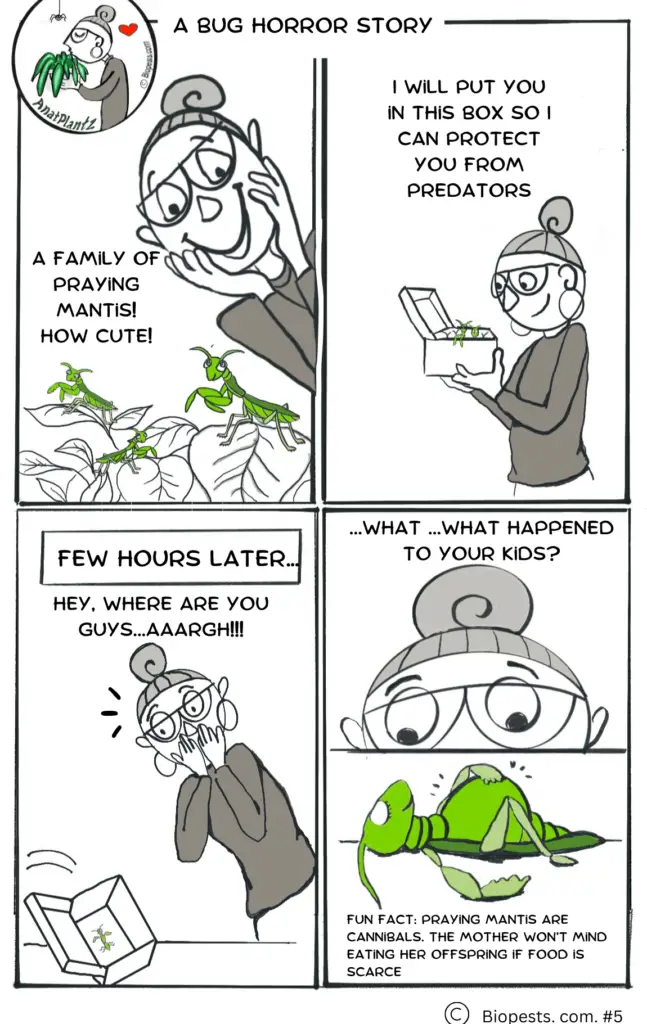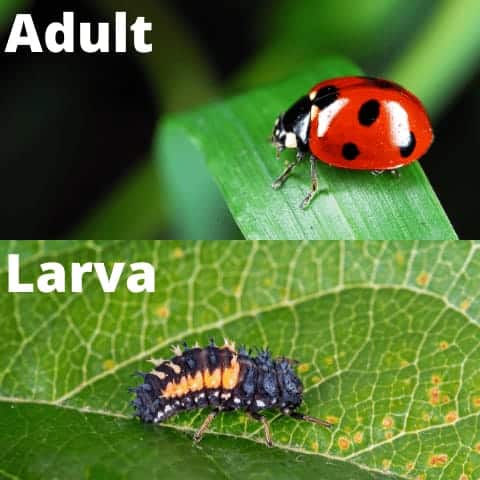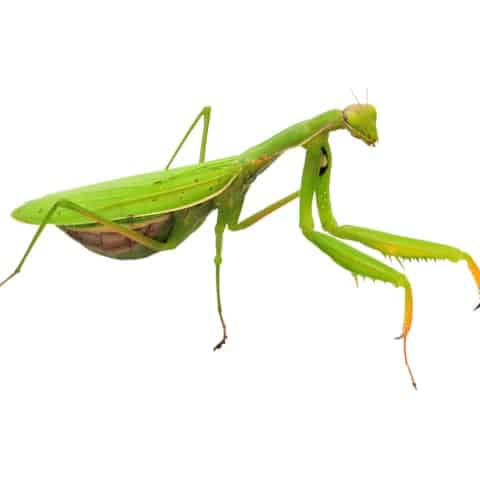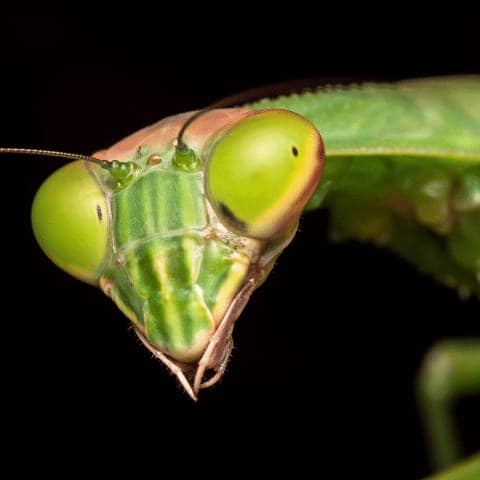Until recently, I used to think that the insects in my garden were a nuisance. Little did I know that a garden with no insects is a dead garden!
Furthermore, I discovered that only a small percentage of them are harmful, but the rest are highly beneficial for both plants and soil.
What Are Beneficial Insects?
Beneficial insects are bugs that do not harm our garden. We can benefit from what they provide:
- Pollination
- Biological Pest control
- Soil aeration
- Breaking down dead plants and waste
- The production of products such as honey and silk
The most common beneficial insects that dwell in our gardens are:
- Aphid Midges
- Assassin Bug
- Butterflies
- Dragonflies
- Green Lacewing
- Ground Beetles
- Honeybees
- Ladybugs
- Minute Pirate Bug
- Parasitoids Wasps
- Praying Mantis
- Rove Beetles
- Soldier Beetles
- Spiders & Mites
- Syrphid Flies
- Tachinid Flies
- Yellow Jackets
We can consider these insects our closest partners working for the success of our gardens!
It often happens that at the first signs of infestation, our instincts urge us to start indiscriminate crusades against anything that has more than four legs, which could lead to awful results.

Comics by AnatPlantz
As I said before, the vast majority (about 97%!) of bugs are beneficial. Before using pesticides, it is important to identify which insects are beneficial to our garden so that we do not accidentally kill them along with the bad bugs, which would do more harm than good to our plants and soil.
How To Identify Beneficial Insects In our Garden
It’s important to familiarize with the appearance of these insects in all stages of their life since they may differ completely in their adult life comparing to when they were larvae.
(Ladybugs fall into this category… they look scary as hell in their larva phase! We will look into that further on)
Beneficial Insects fall into two categories:
- Predators: meaning that they feed on pests.
- Parasitoids: meaning that they lay their eggs on other insects or nearby, so that when their larvae hatch, they can feed on the hosting pests.
Let’s get to know these amazing little bugs and their role in balancing our garden ecosystem!
Assassin Bug:

This is a common name which includes almost 7000 different species of insects in the true bug order (Hemiptera). Since there are so many different bugs that belong to this family, their appearance will differ. Some will look like a spider, while others may resemble a stink bug. These ambush predators attack their victims using their long rostrum. They puncture the prey and inject a toxic fluid that breaks down the prey tissue and then they suck on it. They can be very effective at killing preys much larger than the bug itself.
Aphid Midges:

Their scientific name is Aphidoletes aphidimyza. They are small flies with long slender legs and antennas curled back over their head. The most effective predators however are their larvae. These small legless maggots usually have a bright orange color and have a voracious appetite: one single larva can kill up to 30 aphids in its lifetime!
They can feed on over 70 species of aphids, making them very effective for biological pest control. As a matter of fact, they are commercially grown by insectaries for this use.
Honeybees:
From an early age, we learn to love these insects which are surely among the best known for their priceless service: the production of honey! These insects, which are related to wasps and ants are known for their role in pollination.
Bees can be found everywhere on the face of earth. They reach a length up to 1.5 inches and feed on nectar and pollen. Without their relentless work, the whole environment would suffer and we wouldn’t be able to enjoy fruit from our trees. If our garden is visited by bees, take it as a blessing and try not to disturb them during their work. The best way to encourage bees is to create a flower garden with a long blooming season and some shallow water source where they can drink.
Bees are not aggressive and have no reason to attack humans. However,if disturbed they will have no problem to use their powerful stinger.
Butterflies:
Butterflies come in a range of colors and sizes and in addition to improving the aesthetics of our gardens, have a very important role as pollinators. They particularly love bright colors flowers with a strong scent.
Although butterflies are not as effective as bees when it comes to pollination, there are plants that depend primarily on butterflies to be pollinated, such as wild flowers.
The diet of adult butterflies is based on nectar, however, when they are in their larvae stage they feed mainly on leaves, flowers, and seed pods. This helps reducing waste and keeps certain weeds from propagating.
Moreover, butterflies are great for the ecosystem of your garden since they are a food source for other animals such as birds, lizards, and spiders.
Ladybugs:

Ladybugs, also known as Lady Beetle or Ladybird Beetle are the natural predators of aphids, mites, and scales, on which they feed voraciously. These small colored insects, with an apparently harmless and fragile appearance, are actually a deadly weapon for aphids and have a very important role in protecting our crops. Their distinctive spots and bright colors are meant to make them unappealing to predators.
Ladybug larvae are even more effective than adult specimens since they immediately begin to feed on aphids right after they hatch from their eggs.
Many gardeners and farmers would do anything to encourage ladybugs to visit their gardens. Since these insects feed also on pollen to survive, the best way to encourage ladybugs to stay in your garden is to provide flowers such as Calendulas, Angelica, and Chives, as well as their beloved pests. To increase the chances of them sticking around for a while, consider buying or making a “ladybug house” to attract them and also other native beneficial insects.
Ladybugs larvae are widely sold commercially by both mail order and retail firms. You can keep them in your refrigerator until you’re ready to use them. The best thing is to release them in the evening so the ladybugs can settle down for the night and wake up in the morning to a feast on aphids from your garden.
Green Lacewing:

These predators are known above all for feeding on aphids, but they will also control mites and other soft-bodied insects such as caterpillars, grasshoppers, mealybugs and whiteflies. Only when they are in the larval stage they are effective as predators. When they become adults they change their appearance and their diet.
Adult green lacewing has a slender body and fishnet wings. These nocturnal flying insects will feed on nectar, pollen, and honeydew. On the other hand, when in their larvae phase they are voracious eaters. Once hatched they will prey on pest eggs, nymphs or adults for about 2 to 3 weeks.
If you have an infestation, it is possible to find green lacewing eggs on the market. You can release them into your garden for an immediate low-cost biological pest control.
Dragonflies:
Dragonflies are like butterflies: everybody loves them. They add something magical when they dart in zig-zag patterns around water sources. Their larval stage can last up to two years, in which they can eat anything: from mosquitos to fish.
Minute Pirate Bug:
Pirate bugs or Minute Pirate bugs are true bugs and belong to the Anthocoridae family. They are tiny predators of aphids, spider mites, caterpillars, and thrips. Their oval-shaped body is usually black with white marks on their wings.
They can grow up to 1/8 of an inch. They are commonly found on foliage, particularly the blossoms of flowering plants.
They have a needlelike beak at the front of the head which is bent back under the head when not in use. They use these piercing sucking mouthparts to penetrate their prey and suck out their juices. Minute pirate bugs are available commercially for the biological control of small plant pests.
Parasitoids Wasps:
Parasitoids wasps are tiny non-stinging wasps with measures that range from pencil-point size Trichogramma wasps to huge black Ichneumonid wasps.
They are considered beneficial insects because they naturally control agricultural pests.
The female lays her eggs on the bodies of other small insects. As soon as the eggs hatch the larvae feed on their host from the inside causing their death.
Depending on the species of parasitic wasp, they are most efficient against:
- aphids,
- beetle larvae,
- bagworms,
- cabbage worms,
- Colorado potato beetle,
- cucumber beetles,
- cutworms,
- gypsy moth caterpillars,
- Japanese beetles,
- leaf-miners,
- mealybugs,
- Mexican bean beetles,
- moth caterpillars,
- sawfly larvae,
- tent caterpillars,
- tomato hornworm
- whiteflies
It’s possible to purchase parasitoids wasps and release them into your garden. They arrive in cards containing anywhere from several hundred to several thousand eggs that you can place in the garden and wait until they hatch.
Ground Beetles:
There are more than 40,000 species of ground beetles worldwide. These insects are easily confused with some cockroaches because they have a similar shape. Most of them are black or brown, shiny with hard, ridged wing covers on the back.
Ground beetles are nocturnal bugs. They hide during the day, and come out at night to feast on cutworms, gypsy moth larvae, root maggots, snails, and even other beetles. Their larvae live in the soil and go after other soil-inhabiting insects.
Ground beetles do no harm to humans; however, they can become a nuisance if they invade our homes. This happens since ground beetles are often attracted by the exterior lighting of houses and get inside our homes trying to reach the light.
Soldier Beetles:

Soldier beetles are soft-bodied, straight-sided beetles with a color range that varies from yellowish to tan. They are usually found inside a flower head such as marigolds or zinnias, where they prey on small caterpillars and grasshopper eggs. Their larvas are predators as well and will eat the eggs of many garden pests, such as slugs, snails, and other nocturnal, ground-hugging creatures.
Praying Mantis:

These are probably the most impressive insects in your garden. They have elongated bodies and triangular heads with bulging eyes supported on flexible necks. They got their name because of the way they hold their front two legs in a position that resembles a praying position.
Praying mantis are nondiscriminating predators. They would eat on almost anything that comes into their path, good and bad bugs, often even each other. Beautifully camouflaged in green or brown colors, they sit motionless on a leaf, patiently waiting to ambush their next victim.
Yellow Jackets
This insect has an infamous reputation. Common knowledge is that yellow jackets are dangerous and aggressive pests.
As a matter of fact, they are considered beneficial pests since they are excellent predators. They feast on larvae and small caterpillars that would otherwise damage our plants and crops. However, there is a reason for their bad reputation: they can be very aggressive if disturbed and their sting is very painful. Moreover, if you or your family members are allergic to bees stings, it is best to discourage this insect from approaching your propriety.
Rove Beetles:
These critters belong to the beetle family. They are black, elongated insects distinguished by their short wing covers. Among their beneficial services to our gardens, they are great decomposers of manure and plant material. Some species act also as pest predators against root maggots.
Rove beetles are not dangerous to humans since they do not bite nor do they have a sting. However, they might cause some reaction if crushed or accidentally rubbed against our skin.
Tachinid Flies:
These bugs fall into the category of parasitoids. They can resemble house flies and usually are either gray or black. They lay their eggs on pests such as cutworms, caterpillars, stinkbugs, and many others making them a very effective biological pest control, to the point that many species of tachinids have been introduced into North America from their native lands for this very reason.
Syrphid Flies:
Syrphid Flies are known also by the name of “Hover Flies”. They are often mistaken for bees or wasps because of their black and yellow stripes. Their appearance is to ward off predators. They lay their egg in the proximity of an aphid colony or any other food source. Their larvae are voracious predators and love to feed on soft-bodied insects, mainly aphids.
Spiders and Mites:
Technically, spiders and mites are not insects but belong to the arachnids family. Nevertheless, I included them in the beneficial insect’s group because of the terrific job they do as pest predators. They prey on thrips and other small pests. Some types of mites eat insect eggs, fungus gnat larvae, and decaying organic matter.
Now that we have covered how to identify these common beneficial insects, let’s find out how to attract them to our gardens!
How To Encourage Beneficial Insects To Our gardens
Why not make your garden a haven for beneficial insects? It’s easy and fun. It’s also one of the cheapest and natural way to help prevent pest infestation.
The best way to protect beneficial insects is to avoid using toxic sprays or dusts in the garden. Even organically acceptable sprays such as insecticidal soap and neem can kill beneficial species, so use them only when absolutely necessary to preserve a crop and then only on the plants that are being attacked.
You can make your yard and garden a haven for beneficial insects by taking simple steps to provide them with food, water, and shelter.
Food Sources:
A flower bed with plants rich in pollen and nectar, such as catnip, dill, and yarrow, is a great food source for the adult stages of many beneficial insects.
Water
You can provide a safe water supply for these delicate insects by filling a shallow birdbath or large bowl. You could add few big stones to the bowl, so they can rest on them. Then add just enough water to create shallow stretches of water. You will need to change the water regularly to prevent the mosquitos from laying their eggs there. Besides that, on sunny days water may evaporate very quickly.
Shelter
Leave some weeds or high grass here and there among your plants to provide alternative food sources and shelter for beneficial species. Set up some permanent pathways and mulched areas around your yard and garden. These protected areas offer safe places for beneficial insects to hide during the daytime or during bad weather.
Buy Beneficial Insects
Not everyone knows that it is possible to actually buy insects in bulk and use them in your greenhouses or garden! Many garden supply and specialty companies offer beneficial insects for sale to farmers, nursery owners, and gardeners. You can buy almost everything from the insects I mentioned in this article!
If you decide to experiment with ordering beneficial insects, make sure you identify the target pest, because most predators or parasites only attack a particular species or group of pests. Find out as much as you can by reading or talking to suppliers before buying beneficial insects.
Release some of the insects directly on or near the infested plants and distribute the remainder as evenly as possible throughout the rest of the surrounding area.
Be aware, however, that the most effective pest control tactic would be to release them in a confined place such as a greenhouse. In a typical home garden, it’s rarely worthwhile. Chances are that most of the insects you release will disperse well beyond the boundaries of your yard. While that may be helpful for your neighborhood in general, it won’t produce any noticeable improvement in the specific pest problem that you had hoped the good bugs would control in your garden.

